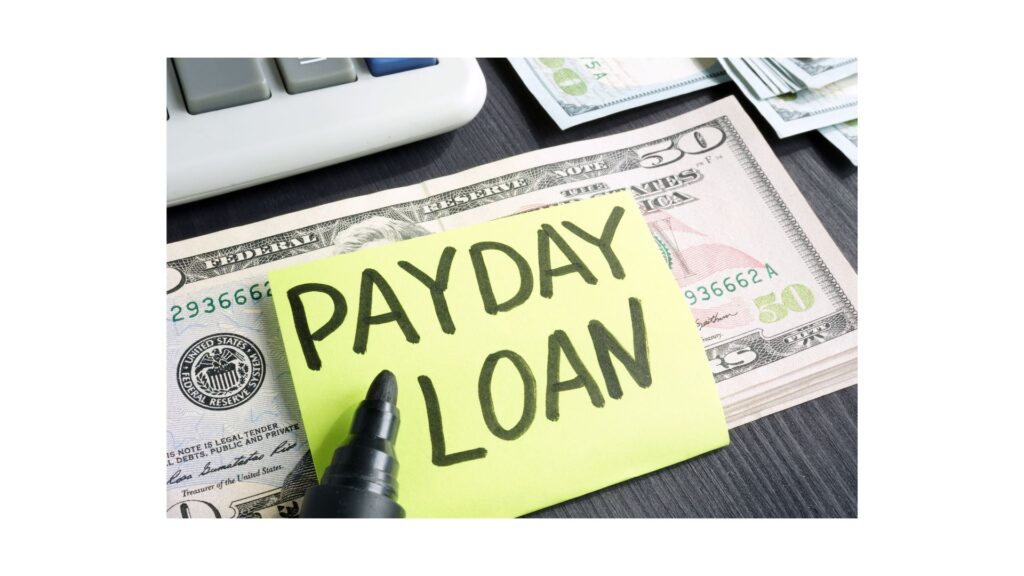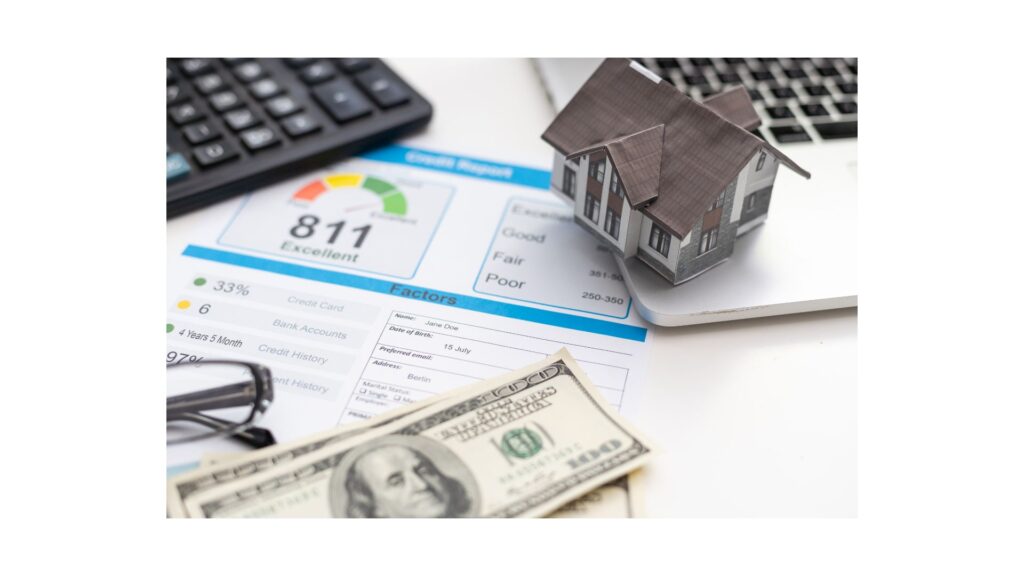Key Insights
- Definition: Secured loans require collateral, reducing lender risk and often leading to lower interest rates.
- Collateral Types: Common collateral includes real estate, vehicles, and investment accounts.
- Loan-to-Value Ratio: A lower loan-to-value (LTV) ratio typically results in better loan terms.
- Risks: Borrowers must understand the risks, including potential loss of collateral and impacts on credit scores.
Understanding Secured Loans

What Are Secured Loans?
Secured loans are financial instruments where the borrower provides collateral, such as property or other assets, to back the loan. This collateral mitigates the lender’s risk, often resulting in lower interest rates compared to unsecured loans. The concept of secured loans can significantly aid in financial recovery, as they enable individuals to access larger amounts of capital for necessary expenses or debt consolidation. By comprehending the fundamentals of secured loans, borrowers can make informed decisions that facilitate their financial recovery journey.
In practical terms, imagine a homeowner who, facing financial difficulties, opts for a secured loan using their home as collateral. This decision allows them to obtain a lower interest rate, making monthly payments more manageable. Understanding secured loans empowers borrowers to leverage their assets effectively during challenging financial times.
Types of Collateral for Secured Loans
Various assets can serve as collateral for secured loans, enhancing the borrowing potential of individuals. Common types of collateral include:
- Real estate properties (homes, land)
- Vehicles (cars, motorcycles, boats)
- Savings accounts (cash value in bank accounts)
- Investment accounts (stocks, bonds)
- Valuable personal property (jewelry, art)
- Inventory or equipment for businesses
Understanding what can be utilized as collateral is crucial for securing a loan. Choosing the right type of collateral can lead to favorable loan terms, enabling borrowers to access funds necessary for recovery. For instance, a borrower with a fully paid-off car might choose it as collateral to secure a loan, thus unlocking funds to pay off higher-interest debts.
How Does Loan-to-Value Ratio Affect Secured Loans?

The loan-to-value (LTV) ratio is a critical factor in secured loans, representing the relationship between the loan amount and the appraised value of the collateral. A lower LTV ratio indicates less risk for the lender, often resulting in more favorable loan terms, including lower interest rates and higher borrowing limits. Conversely, a higher LTV ratio can lead to higher costs and stricter loan conditions.
For example, if a borrower seeks a $150,000 loan on a home appraised at $200,000, the LTV ratio is 75%. This ratio presents a relatively low risk for lenders, making it more likely for the borrower to secure the loan. Understanding how LTV ratios work is essential for borrowers aiming for successful financial recovery, as it impacts not only the approval process but also the overall cost of borrowing.
Expert Insights on how to use secured loans for financial recovery
What Are the Best Practices for Using Secured Loans?
To effectively utilize secured loans for financial recovery, borrowers should adhere to best practices such as selecting appropriate collateral, thoroughly understanding loan terms, and formulating a clear repayment strategy. These practices are vital for maintaining financial health and ensuring successful loan management.
Choosing the right collateral is the first step. Borrowers should assess the value of their assets and the potential loan size relative to their needs. For instance, using a car as collateral may be advantageous for obtaining a smaller loan, while a house may allow access to larger amounts. Understanding loan terms, including interest rates and fees, can prevent financial pitfalls. For example, a borrower may find a secured loan with an interest rate of 5% preferable to one at 7%, significantly affecting their total repayment amount.
Real-world examples illustrate the effectiveness of secured loans in financial recovery. A small business owner, for instance, might use the equity in their home to secure a loan for business expansion, ultimately leading to increased revenue and a strengthened financial position. Such strategic planning demonstrates the power of secured loans when appropriately managed.
How Can Secured Loans Be Part of a Broader Financial Strategy?

Secured loans can seamlessly integrate into a broader financial strategy, playing a crucial role in debt consolidation, investment opportunities, or funding essential expenses. By including secured loans in a comprehensive financial plan, individuals can enhance their recovery efforts and achieve long-term stability.
One effective approach is debt consolidation, where multiple high-interest debts are combined into a single loan with a lower interest rate. For instance, a borrower with credit card debt and personal loans could use a secured loan to pay off these debts, simplifying their monthly payments and potentially reducing total interest paid. Moreover, secured loans can be used to invest in assets that generate income, such as real estate, creating a sustainable financial future.
Actionable steps for integrating secured loans into financial strategies include conducting a thorough debt assessment, identifying the right type of secured loan for specific needs, and developing a repayment plan that aligns with cash flow. By strategically leveraging secured loans, borrowers can work towards financial recovery and stability.
What Are the Risks of Using Secured Loans?
While secured loans offer various benefits, they also carry inherent risks that borrowers must understand to navigate their financial recovery effectively. The most significant risk is the potential loss of collateral, which can occur if the borrower defaults on the loan. This could lead to the lender seizing the asset used to secure the loan, resulting in financial and emotional distress.
In addition to the loss of collateral, borrowers may face high-interest rates if they fail to manage their loans responsibly. Poor credit scores or late payments can exacerbate financial challenges, making it essential to prioritize repayment and maintain open communication with lenders. Furthermore, excessive borrowing against collateral can negatively impact credit scores, affecting future borrowing capabilities.
Understanding these risks is vital for individuals considering secured loans as part of their recovery strategy. By being aware of the potential downsides, borrowers can implement measures to mitigate risks, such as creating a sustainable repayment plan and regularly reviewing their financial situation.
Applying for a Secured Loan
What Are the Steps to Apply for a Secured Loan?
Applying for a secured loan involves a series of structured steps that can lead to successful acquisition and financial recovery. The first step is assessing available collateral; borrowers should evaluate the value and condition of their assets to understand their borrowing capacity.
Next, selecting a lender is crucial. Borrowers should research various lenders, comparing interest rates, terms, and customer reviews to find the best fit for their needs. Once a lender is chosen, completing the application process involves submitting necessary documentation, such as proof of income, details on collateral, and a credit history.
By following these steps, borrowers can streamline the application process and improve their chances of securing a loan. For example, a borrower looking to finance a home renovation through a secured loan might first assess the equity in their home, choose a lender specializing in home equity loans, and then prepare the required documentation. This structured approach ensures a smoother path to financial recovery.
How to Choose the Right Lender for a Secured Loan?
Selecting the right lender for a secured loan is a critical decision that can significantly influence the terms and conditions of the loan. Key criteria to consider when choosing a lender include:
- Interest rates offered
- Loan terms and conditions
- Reputation and customer service ratings
- Availability of flexible repayment options
- Speed of loan processing and disbursement
- Fees associated with the loan
Comparing these factors among different lenders can help borrowers find a suitable option that aligns with their financial goals. A lender with a solid reputation and positive customer feedback, for example, may offer peace of mind throughout the loan process. Additionally, borrowers should consider not just the interest rate but also the overall cost of the loan, including fees, to assess the total financial impact.
Taking the time to research and compare potential lenders enables borrowers to make informed choices that enhance their financial recovery strategy. By selecting a lender that meets their specific needs, borrowers can secure favorable loan terms that support their recovery objectives.
What Documents Are Needed for a Secured Loan Application?
When applying for a secured loan, preparing the necessary documentation is essential to streamline the application process and increase approval chances. Common documents typically required include:
- Proof of income (pay stubs, tax returns)
- Collateral valuation documents (appraisals, purchase receipts)
- Credit history report
- Identification (driver’s license, Social Security number)
- Proof of residency (utility bills, lease agreements)
Having these documents ready can expedite the application process and ensure that the lender has all the information needed to assess the loan request. For instance, a borrower applying for a home equity loan should provide a recent appraisal of the property, demonstrating its current market value to support the loan amount requested.
Thorough preparation of required documents not only improves the chances of securing the loan but also fosters trust and transparency between the borrower and the lender, crucial elements in the financial recovery journey.
How Can You Improve Your Chances of Secured Loan Approval?
Improving the likelihood of securing a loan involves several strategic actions that can enhance a borrower’s profile in the eyes of lenders. Key steps include enhancing your credit score, providing adequate collateral, and preparing a robust loan application.
Boosting your credit score can significantly impact loan approval chances. This can be achieved by paying down existing debts, ensuring timely payments, and addressing any inaccuracies in credit reports. Additionally, presenting substantial collateral that meets or exceeds the loan amount requested can reassure lenders of their investment’s security, further improving approval odds.
Preparing a solid loan application is equally important. Borrowers should clearly articulate the purpose of the loan, demonstrate financial responsibility, and provide comprehensive documentation. By taking these proactive measures, individuals can enhance their chances of securing a secured loan, ultimately aiding in their financial recovery efforts.
Managing Secured Loans for Financial Recovery
How to Create a Repayment Plan for Secured Loans?
Establishing a well-structured repayment plan for secured loans is pivotal in ensuring successful financial recovery. This plan should consider individual income, fixed expenses, and the terms of the loan to create a realistic and sustainable payment strategy.
Begin by assessing your monthly income and expenses. Calculate how much excess cash flow is available for loan payments after covering essential living costs. For example, if a borrower has an income of $4,000 and monthly expenses of $3,000, they have $1,000 available for loan repayments. This amount should then be allocated towards the secured loan, taking into account the loan’s interest rate and repayment timeline.
Regularly reviewing and adjusting the repayment plan as financial situations change is also crucial. For instance, if a borrower receives a raise or incurs unexpected expenses, they should adapt their plan accordingly. By creating a responsive and realistic repayment strategy, borrowers can navigate their secured loans effectively, driving toward financial recovery.
What Are the Benefits of Early Repayment?
Early repayment of secured loans can yield significant benefits, contributing to enhanced financial recovery and stability. One of the primary advantages is the potential to save on interest payments. By repaying a loan ahead of schedule, borrowers can reduce the overall interest accrued, leading to substantial savings over the life of the loan.
In addition to financial savings, early repayment can positively impact a borrower’s credit score. A lower outstanding debt level signals to credit bureaus that the borrower is managing their obligations effectively, potentially leading to improved creditworthiness. For example, an individual who pays off a secured loan early may see an increase in their score, making it easier to secure future financing.
Understanding these benefits encourages borrowers to consider early repayment strategies, thus accelerating their journey toward financial recovery and stability. By prioritizing early repayment when feasible, individuals can foster a healthier financial future.
How Can Secured Loans Help in Debt Consolidation?
Secured loans can serve as effective tools for debt consolidation, providing a streamlined solution for managing multiple debts. By using a secured loan to pay off various high-interest debts, borrowers can combine these obligations into a single loan, often at a lower interest rate.
For instance, an individual with credit card debt, personal loans, and medical bills may choose to secure a loan against their home equity to consolidate these debts. This strategy simplifies monthly payments and may lower overall interest costs, allowing the borrower to focus on a single repayment rather than juggling multiple creditors.
Moreover, consolidating debts through a secured loan can reduce the stress associated with managing multiple payments and due dates. This clarity can be particularly beneficial for individuals in financial recovery, as it helps them regain control over their finances. By effectively utilizing secured loans for debt consolidation, borrowers can streamline their financial obligations and work towards a more stable economic future.
What Are the Alternatives to Secured Loans?
What Are Unsecured Loans and How Do They Compare?
Unsecured loans are financial products that do not require collateral, making them distinct from secured loans. While they offer borrowers the convenience of not risking personal assets, unsecured loans typically come with higher interest rates due to the increased risk for lenders. Borrowers may face stricter eligibility criteria and greater scrutiny of their creditworthiness.
The main advantage of unsecured loans is the lack of collateral requirement. This can be beneficial for individuals who lack sufficient assets to secure a loan or who wish to avoid risking their property. However, the trade-off often involves higher costs and potentially shorter repayment terms.
When evaluating options, borrowers should consider their financial situation and risk tolerance. For example, someone with a strong credit score may find an unsecured personal loan to be a viable option, while another individual facing financial challenges might benefit more from a secured loan with lower interest rates. Understanding these options is vital for informed decision-making in the financial recovery process.
How Can Personal Savings Be Used for Financial Recovery?
Utilizing personal savings can be a prudent approach to financial recovery, offering a way to avoid debt while addressing immediate financial needs. This strategy can provide individuals with the funds necessary to cover expenses without incurring interest charges associated with loans.
For example, if someone has accumulated savings in a high-yield account, they can withdraw funds to pay for unexpected expenses, such as medical bills or car repairs. This approach allows them to maintain control over their financial situation without increasing their debt burden.
However, it is essential to balance using savings with maintaining an emergency fund. Borrowers should avoid depleting all their savings, as this can leave them vulnerable to future financial challenges. Striking a balance between using savings for immediate needs and preserving enough for emergencies is crucial for long-term financial stability.
What Are the Benefits of Credit Counseling?
Credit counseling offers valuable guidance for individuals navigating financial challenges, providing insights on debt management and improving overall financial health. This service typically involves working with a certified credit counselor who assesses the client’s financial situation and develops a personalized plan to address their needs.
One primary benefit of credit counseling is the ability to create a structured budget and repayment plan. Counselors can help clients identify spending habits, prioritize debts, and develop strategies for better financial management. Additionally, they may offer educational resources that empower borrowers to make informed decisions regarding their finances.
Credit counseling can also facilitate negotiations with creditors, potentially resulting in lower interest rates or modified payment plans. This support can alleviate the stress associated with overwhelming debt and aid in financial recovery. By leveraging the expertise of credit counselors, individuals can gain the tools and knowledge needed to achieve a healthier financial future.
What Role Do Peer-to-Peer Loans Play in Financial Recovery?
Peer-to-peer (P2P) loans represent a modern borrowing option that connects borrowers directly with individual investors, bypassing traditional banks. This method can serve as an alternative to secured and unsecured loans, offering potentially more flexible terms and lower interest rates based on the borrower’s profile.
P2P loans can be beneficial for individuals seeking financial recovery, particularly if they have a solid credit history or a compelling reason for borrowing. Investors on P2P platforms may be more willing to take calculated risks with their funds, providing opportunities for borrowers who might struggle with conventional lending options.
However, it is essential for borrowers to carefully evaluate P2P loans, considering factors such as interest rates, repayment terms, and platform fees. By understanding the intricacies of P2P lending, individuals can make informed decisions that support their financial recovery goals.
How Can Debt Consolidation Help with Financial Recovery?
Debt consolidation is a strategic approach to managing multiple debts by combining them into a single loan, often with more favorable terms. This strategy can simplify monthly payments and reduce overall interest costs, making it an appealing option for individuals seeking financial recovery.
For example, a borrower with various high-interest debts, such as credit card balances and personal loans, might secure a consolidation loan with a lower interest rate. This action not only streamlines their payment process but also enables them to focus on a single monthly payment rather than juggling multiple obligations.
In addition to simplifying repayment, debt consolidation can also improve financial health by reducing the total interest paid over time. Borrowers can allocate savings towards other financial goals, such as building an emergency fund or investing in their future. By effectively using debt consolidation, individuals can enhance their financial recovery strategy and work towards greater economic stability.
Research-Backed Benefits of how to use secured loans for financial recovery
What Does Research Say About Secured Loans and Financial Recovery?
Research indicates that secured loans can be instrumental in facilitating financial recovery, especially when borrowers manage them responsibly. Studies show that individuals who utilize secured loans for debt consolidation or essential expenses often experience more favorable financial outcomes compared to those relying solely on unsecured debt or high-interest loans.
Moreover, secured loans typically come with lower interest rates, making them more attractive for borrowers seeking to stabilize their financial situations. With effective management, secured loans can lead to improved credit scores and an enhanced ability to access additional credit in the future.
Expert analysis further reveals that the key to successful loan usage lies in understanding the terms, properly leveraging collateral, and adhering to a solid repayment plan. By focusing on these aspects, borrowers can navigate secured loans effectively, making them a valuable tool in the financial recovery process.
How Have Secured Loans Impacted Financial Recovery in Different Scenarios?
Secured loans have been utilized successfully in various recovery scenarios, demonstrating their versatility in financial strategy implementation. For example, individuals facing personal bankruptcy may leverage secured loans to consolidate outstanding debts, paving the way for a fresh start. By paying off high-interest debts with a secured loan, they can significantly lower their monthly obligations and develop a more manageable financial trajectory.
In the business realm, secured loans have helped many entrepreneurs restructure their operations following economic downturns. A business owner may use their property as collateral to secure a loan, allowing them to invest in necessary improvements or equipment upgrades, ultimately leading to increased revenue generation. Such real-world instances illustrate the potential of secured loans to assist in diverse financial recovery scenarios.
By analyzing these impacts, borrowers can gain valuable insights into the effective use of secured loans, informing their strategies in navigating financial challenges. Understanding the varied applications of secured loans empowers individuals to make informed decisions that enhance their recovery efforts.
What Are the Long-Term Effects of Using Secured Loans for Financial Recovery?
The long-term effects of utilizing secured loans for financial recovery can be both positive and negative, largely depending on how well the loans are managed. On the positive side, responsible usage of secured loans can lead to improved credit scores and enhanced financial stability. By making timely payments and reducing overall debt loads, borrowers can strengthen their creditworthiness, paving the way for future financing opportunities.
However, the risks associated with secured loans must not be overlooked. If borrowers fail to manage their loans effectively, they may face foreclosure on the collateral, resulting in significant financial and emotional distress. Long-term financial health hinges on a careful balance between leveraging loans for recovery and maintaining a sustainable repayment strategy.
Understanding these long-term effects is crucial for borrowers as they plan their financial futures. By employing secured loans judiciously and prioritizing responsible financial management, individuals can work towards achieving lasting financial recovery and stability.
Legal Considerations for Secured Loans
What Are the Legal Requirements for Secured Loans?
Legal requirements for secured loans are essential to ensure both borrower and lender interests are protected throughout the borrowing process. Key legal considerations include the clarity of loan terms, thorough disclosure of risks, and proper documentation of collateral.
Lenders must provide borrowers with detailed information regarding interest rates, repayment schedules, and any applicable fees or penalties. Additionally, legal documentation must accurately reflect the value of the collateral, ensuring that both parties are aware of their rights and obligations throughout the loan term.
Failing to adhere to legal requirements can lead to disputes, financial loss, and damage to credit ratings. Therefore, borrowers should understand these legalities and ensure that all documentation is complete and transparent before signing any agreements.
How to Handle Default on a Secured Loan?
Handling default on a secured loan requires prompt action and open communication with the lender. The first step is to contact the lender immediately upon realizing financial difficulties. Many lenders are willing to discuss options, such as loan modification or restructuring, which can prevent foreclosure on the collateral.
Borrowers should also explore alternatives to default, such as refinancing the loan or negotiating a repayment plan that aligns with their current financial situation. Understanding the legal implications of default is crucial, as it can lead to severe consequences, including the loss of the collateral and damage to the borrower’s credit score.
By proactively addressing potential default situations and seeking solutions, borrowers can mitigate the financial damage associated with loan defaults and work towards a more stable financial future.
What Are the Consumer Protections for Secured Loans?
Consumer protections for secured loans are designed to safeguard borrowers from unfair lending practices and ensure transparency throughout the lending process. Key protections include:
- Rights to fair lending practices
- Disclosure of loan terms and associated risks
- Access to accurate loan documentation
- Recourse options in case of disputes or lender errors
- Limits on fees and penalties
Understanding these protections is vital for borrowers as they navigate the secured loan landscape. By knowing their rights, individuals can advocate for themselves and seek redress if they encounter unfair treatment from lenders. This knowledge empowers borrowers to make informed decisions that support their financial recovery journey.
What Are the Consequences of Foreclosure on a Secured Loan?
Foreclosure on a secured loan can have severe consequences for borrowers, profoundly impacting their financial and emotional well-being. The most immediate effect is the loss of the collateral used to secure the loan, which can be particularly devastating for homeowners or business owners. This loss not only results in the forfeiture of property but can also lead to significant financial instability.
Additionally, foreclosure can inflict lasting damage on a borrower’s credit score, making future borrowing more challenging and expensive. Borrowers may face difficulties securing loans, credit cards, and even rental agreements due to the negative implications of foreclosure on their credit history.
Understanding the consequences of foreclosure is crucial for borrowers as they navigate their financial recovery. By prioritizing communication with lenders and exploring alternatives to foreclosure, such as loan modification or debt counseling, individuals can mitigate the potential fallout and work towards regaining financial stability.
Success Stories and Case Studies
How Have Individuals Used Secured Loans for Financial Recovery?
Individuals have successfully utilized secured loans as strategic tools in their financial recovery journeys, demonstrating the versatility and effectiveness of these financial products. One notable success story involves a recent college graduate struggling with student loan debt. By leveraging the equity in their home, the individual secured a loan to consolidate high-interest student loans, resulting in lower monthly payments and a more manageable repayment plan.
Another example features a small business owner who faced financial challenges during an economic downturn. By obtaining a secured loan against their business property, the owner funded necessary renovations and marketing efforts, ultimately revitalizing their business and increasing revenue. These examples illustrate how secured loans can serve as a lifeline for individuals in various financial situations, empowering them to regain control over their financial destinies.
What Are Some Notable Case Studies of Secured Loans in Financial Recovery?
Notable case studies highlight the efficacy of secured loans in facilitating financial recovery across diverse scenarios. One case study involves a family facing significant medical expenses. By securing a loan against their home, they were able to cover these costs without incurring high-interest credit card debt, allowing them to manage their finances more effectively.
In another case, a struggling entrepreneur utilized a secured loan to consolidate multiple debts and fund an innovative business project. This strategic decision led to increased cash flow and ultimately improved profitability. By analyzing such case studies, borrowers can glean valuable insights into effective strategies for leveraging secured loans in their financial recovery efforts.
How Can Success Stories Guide Your Financial Recovery Strategy?
Success stories serve as powerful sources of inspiration and practical guidance for individuals navigating their financial recovery. By learning from the experiences of others who have effectively utilized secured loans, borrowers can adopt best practices and avoid common pitfalls.
Key takeaways from success stories often include the importance of thorough research when selecting a lender, the value of clear communication regarding repayment terms, and the benefits of maintaining a disciplined approach to managing debts. These narratives can also underscore the significance of resilience and adaptability in overcoming financial challenges.
By incorporating lessons from success stories into their financial recovery strategies, individuals can cultivate a proactive mindset and take actionable steps toward achieving their financial goals. This approach not only fosters a sense of hope but also equips borrowers with practical tools for navigating their financial futures.
FAQs
What is a secured loan?
A secured loan is a loan backed by collateral, such as real estate or vehicles, which reduces the lender’s risk and typically results in lower interest rates.
What types of collateral can I use for a secured loan?
Common types of collateral include real estate, vehicles, savings accounts, investment accounts, and valuable personal property.
How does the loan-to-value ratio impact my secured loan?
The loan-to-value (LTV) ratio compares the loan amount to the collateral’s value; a lower LTV often results in better loan terms and lower interest rates.
What are the risks associated with secured loans?
Risks include the potential loss of collateral, high interest rates if not managed properly, and negative impacts on credit scores.
What documents are needed to apply for a secured loan?
Documents typically required include proof of income, collateral valuation, credit history, identification, and proof of residency.
How can I improve my chances of getting approved for a secured loan?
Enhancing your credit score, providing sufficient collateral, and preparing a solid application can improve your chances of approval.
What are the benefits of early repayment of secured loans?
Early repayment can save on interest costs, improve credit scores, and reduce overall debt levels, aiding in financial recovery.
How can secured loans help with debt consolidation?
Secured loans can consolidate multiple high-interest debts into one loan, often with a lower interest rate, simplifying repayments.
What are the alternatives to secured loans?
Alternatives include unsecured loans, personal savings, credit counseling, peer-to-peer loans, and debt consolidation options.
What legal protections exist for secured loan borrowers?
Borrowers are entitled to fair lending practices, clear disclosure of loan terms, and recourse options in case of disputes with lenders.

A Mississippi-based financial consultant with over a decade of experience in personal finance and payday lending. Originally from Jackson, he holds certifications in financial planning and credit advisory. Passionate about helping everyday Americans make smarter borrowing decisions, he focuses on guiding people away from common debt traps while promoting healthy financial habits. His expertise bridges the gap between short-term loan needs and long-term money management strategies. Outside of work, he volunteers with local programs that promote financial literacy across Mississippi.





Your breakdown on secured loans emphasizes crucial points about managing risk for both lenders and borrowers. While the potential for lower interest rates is certainly appealing, the pitfalls of collateral loss are a stark reminder of the stakes involved. It’s interesting to consider how the trend toward tighter lending practices in recent years has influenced borrowers’ choices.
I found your breakdown of secured loans really helpful, especially how you highlighted the relationship between collateral and lower interest rates. It’s interesting to think about how this financial tool can be a double-edged sword. On one hand, secured loans can provide individuals with the means to achieve substantial purchases or manage debt more effectively, particularly when interest rates are much lower than on unsecured loans. This can be a lifesaver for many, especially during tough financial times where a tighter budget doesn’t quite cut it.